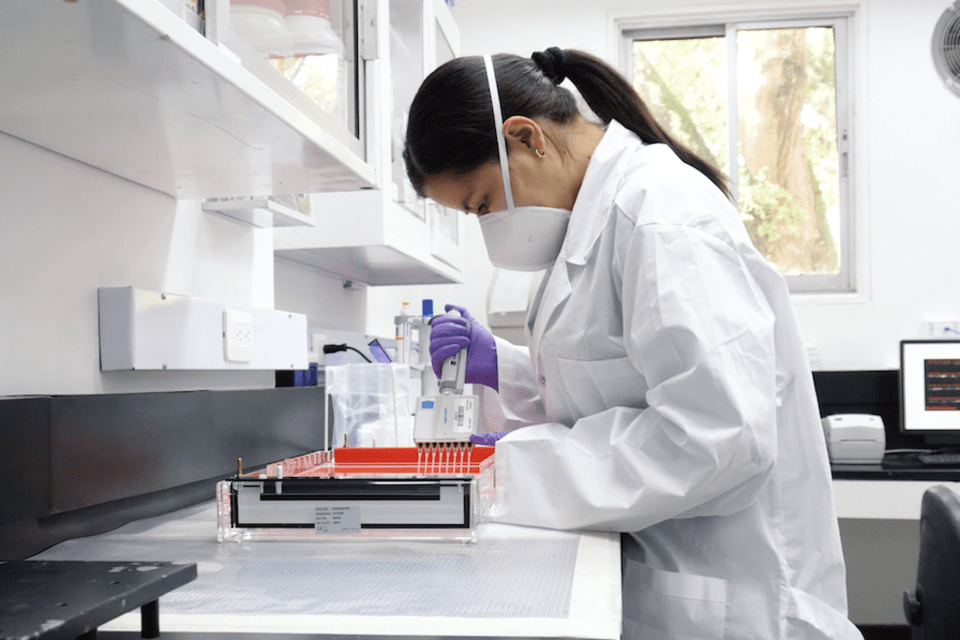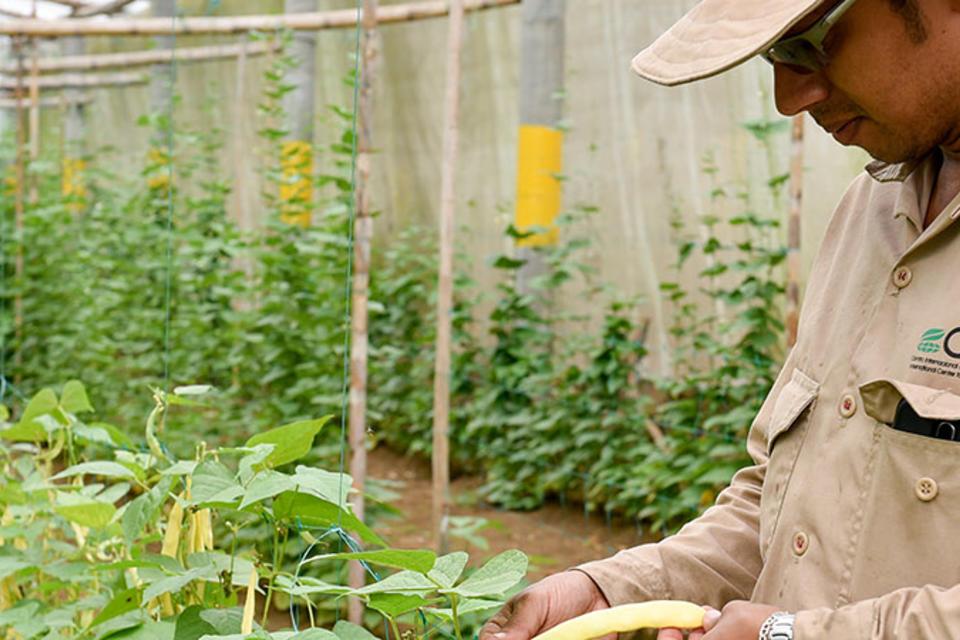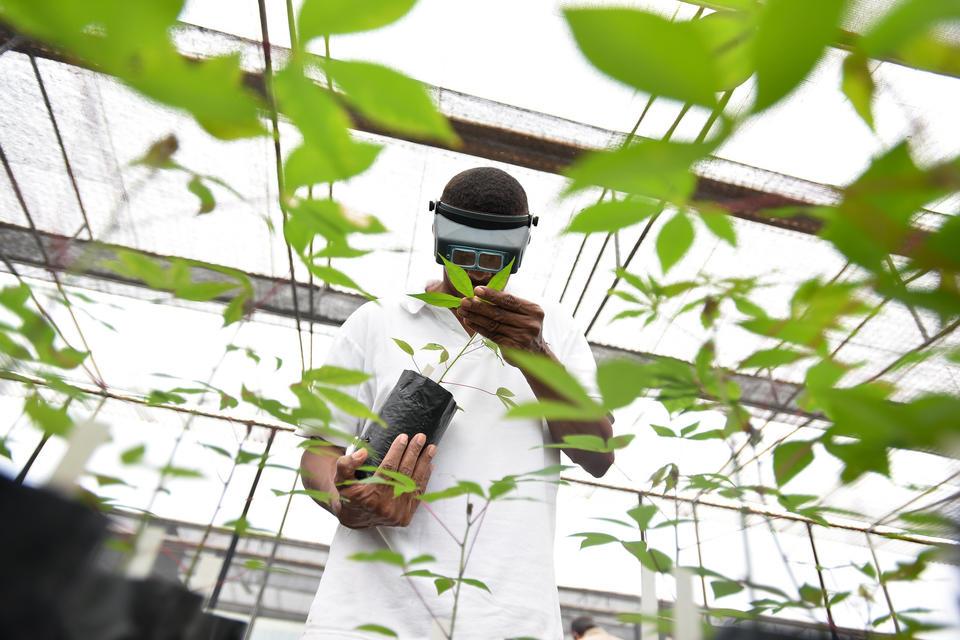2020 Annual Report Future Seeds transforms the way people interact with crop research

In his decades of travels, Daniel Debouck saw many genebanks. While they all had different levels of scientific excellence, their buildings were as “iconic as shoeboxes.” The CGIAR’s newest genebank in Colombia breaks that mold.
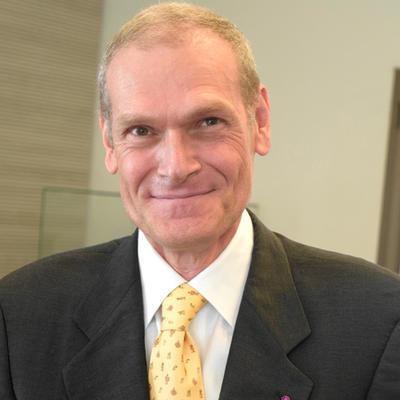
Daniel Debouck
Emeritus Scientist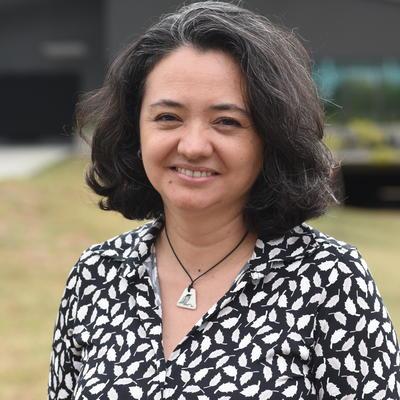
Marcela Santaella
Genebank Operations and Quality ManagerAmid the myriad disruptions and tragedies of 2020, there was one constant at the Colombia campus of the Alliance of Bioversity International and CIAT. Near our campus’s signature palm-tree-lined entrance and its iconic white arches, CGIAR’s newest genebank steadily rose taller above the experimental fields of rice, beans, forages and the campus’s tallest buildings.
Set for completion in 2021, Future Seeds will replace the Alliance’s current Colombia genebank, which was crammed into a retrofitted slaughterhouse in the late 1960s. It will be the most modern facility of its kind in the CGIAR network, allowing us to take our crop research and agrobiodiversity conservation to new levels of excellence.
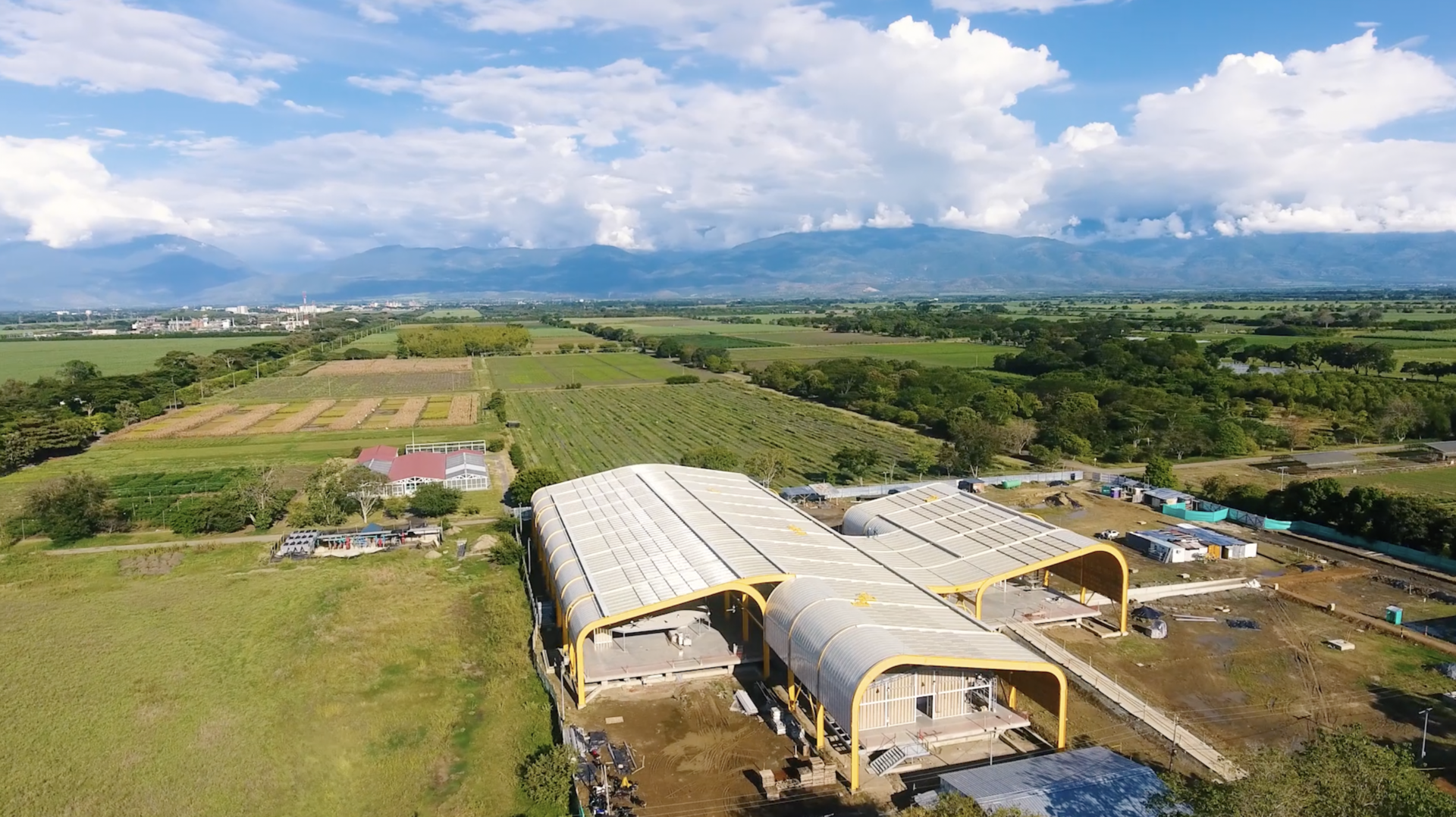
Future Seeds will be about much more than accelerating scientific breakthroughs. It will be a place to inspire curious schoolchildren, give career-influencing experiences to young university students and build new partnerships across the globe. Uniquely, it will be a place for partners and visitors to see firsthand what our crop scientists do and to learn about the food systems we are all a part of.
At a time of potentially calamitous global change, which may threaten decades of gains on food security, Future Seeds will play a small but important role in teaching people about where food comes from (not from the market or a motorcycle courier) and how agricultural science is critical to a healthy, prosperous future for everyone.
As scientists around the world have learned over the last few decades, making findings and publishing them in journals is no longer enough. We cannot fully trust educational systems anywhere to properly instill scientific literacy in students, professionals, political leaders and the heads of corporations. We have to communicate what we do to as many people as we can and make science as understandable and relatable as possible.
This is why Future Seeds was designed to be a center of general learning. With windows instead of walls and a visitor-friendly atrium, Future Seeds will open the scientific process of genebanks to anyone.
We envision the facility becoming a must-visit destination for every school in the region. We hope that architects, business leaders and tourists visit just to see the environmentally friendly building, which was designed to show what sustainable operations look like. We are confident that any visitor to this facility will leave having learned a little bit more about the science of food systems.
Take a virtual tour of our genebanks
Training the next generation
The key “attraction” of course, will be Alliance scientists in action, working with our agrobiodiversity collection as they have for decades. To continue to build upon the genebank’s scientific progress – particularly in the fields of accelerated crop breeding for nutrition and climate change – we will need a new generation of scientists. Future Seeds will not only attract but help train specialists from around Latin America and beyond.
A critical piece of our food system transformation is to reconstrue agriculture into a biologically diverse, zero-emission and carbon-capture endeavor. Future Seeds will work for enhanced conservation of the true resources (i.e., not hydrocarbons) in plant biodiversity. Beyond the three collections this genebank has and the conservation and utilization of crop genetic variation, Future Seeds will be of the transformational re-thinking and reorientation of agriculture. Conservation, knowledge and education are the building blocks of Future Seeds.
These may seem like lofty goals but we know that, in cooperation with our many partners, we can achieve them. This is why we spent much of 2020 not only eagerly watching Future Seeds near completion but also working toward conceptualizing the experience visitors will have to the facility. We’re working with educators, museography specialists and architects to make sure that Future Seeds adequately captures our major scientific questions and makes them relatable to visitors.
What are improved forages and how will they make livestock more sustainable? What is a plant virology lab for and why is its work critical to billions of dollars of the food industry? How are we making crops healthier and hardier in the face of climate change? Why do we have tens of thousands of varieties of seeds, many of which are no longer found in the wild, and what do these mean to the future of food on a heated planet with some 10 billion inhabitants on it in the coming decades? We look forward to answering these questions for visitors at Future Seeds.
The Alliance maintains genebanks in Colombia (for cassava, beans, and tropical forages) and in Belgium (for bananas).

